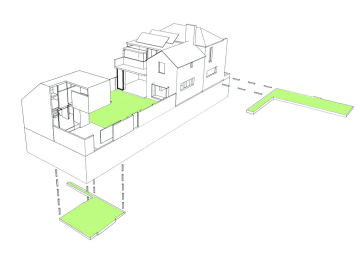Subscribe to keep up to date with the latest research, resources, news and events from The Deck.
You can also sign up to Q Shelter’s monthly newsletter, Home Matters.

Caitlin McGee and Suzanne Benn and University of Technology Sydney provides funding as a founding partner of The Conversation AU.
Housing affordability is at crisis levels in many Australian cities, fuelled by an inadequate supply of housing in areas close to jobs and a taxation system that favours investors over first home buyers.
The Reserve Bank has suggested that “the answer… lies in the more innovative and flexible use of the land that we have so that the marginal cost of adding more stock of dwellings is lower.”
Co-housing – where a group of friends, extended family members or downsizers band together to buy into small blocks with some common space – may well be one of those innovations.
This version of co-housing is a mainstream concept wherein suitable single-dwelling suburban blocks are adapted to accommodate two or three smaller dwellings with some shared spaces, reducing the overall physical and environmental footprint per household.
Co-housers could be friends struggling to afford a first home, intergenerational families or downsizers wanting to unlock equity for their retirement and live close to friends or family.
So if co-housing is such a good idea, why isn’t it widespread already?
Firstly, there’s the perception that it’s for alternative types only, and there are not many urban precedents. But co-housing principles are starting to be applied in more mainstream ways and at different scales – from large urban co-housing projects overseas to plans for a crowd-sourced apartment community in Melbourne to an innovative Gen Y house in Perth. Renovation costs may also be a factor…